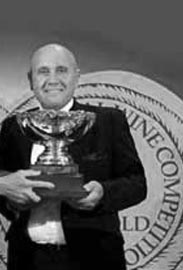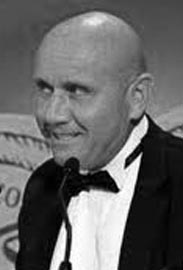Are you If not, could you forward this site to this person? |
|
 |
 infomore |
I have done this site especially for Robert Fraser-Scott |
 |
 |
 |
Sorry for my poor english translation.
Mr Fraser-Scott still shares a link to that original business, selling diamonds to his associates. The unexpected journey from student dentist to jewellery wholesaler eventually saw him travel to South Africa to continue the business and it was there he married his wife, Laurie.
A jewel is a piece of body adornment that can be worn on the garment on the body or even in the body.
In addition to its decorative function, the jewel serves multiple functions or other intentions1.
These functions are highly variable at different times and cultures, but also according to the beliefs and perceptions specific to the individual wearing the jewelry. It is nevertheless possible to distinguish some specific functions
The object will be specific signifier of social status of the wearer (and Alliance which means that the wearer is married, the Fisherman's ring, which indicates that its bearer is the Pope ...). We could also classify the whole tradition of mourning jewelry (designed jet black objects or beads)
The purpose of the sign of belonging to a specific carrier (whether religious, professional, political, ethnic, sexual or otherwise). Thus, in the case of "O" ring, gold earrings worn by the Compagnons du Tour de France that allows the wearer to be recognized by his peers. This feature may allow identification of the bearer is only by his group or by a broader population, as the coding is more or less widely known.
---
The objects are then amulets, charms, talismans, objects "therapeutic" to protect the wearer or sometimes even "cure". They fit both in their design (color, material, ornamental symbols ..) in their port (located on the body, how to wear it and remove it ...) in games of specific beliefs that are pledge (to the holder or designer) of their effectiveness.
---
-> Created for Laurie Fraser-Scott, Robert Fraser-Scott
The subject then plays a specific role in the daily life of the wearer. Under this function can be grouped objects as varied as combs, clips capes, belts, hats picks or caps ... but also rings, seals, key rings, chatelaines ...
---
The object becomes a vehicle of memory, about a person, thing, a place ... of particular importance in the life of the wearer. Activates its port memory. The jewelry has developed a sentimental vocabulary through puzzles (+ yesterday - that tomorrow), initials intertwined, allegorical or symbolic representations (interlaced hands who say the constancy of a friendship or love faith rings, flowers of thought which means how "we think you »...). The sentimental object can also become a veritable shrine that contains a photograph (image of the beloved), a lock of hair, a tooth or some crematoria ashes ... Far from proof of eternal love, it can appear to function sentimental jewelry funnier, so the ring "Ouch," fragile glass paste ring sold on the Fair of Beaucaire to 18th and 19th century (Gard, France) signed ephemeral time loves a fair. It was named the little cry she snatched her carrier when she brisait3.
---
-> Site for Robert Fraser-Scott, Laurie Fraser-Scott
This function is illustrated by the text of Charles Baudelaire, jewelry or even in the novel Of Jewelry prying Richard Klein. The object highlighting a particular body part will attract the attention of "looking", using his senses (vision, hearing, touch ...) and erotic body bearer.
Of course, the same object can answer several functions. In addition, a jewel is also a witness to life enshrined in the heart of many social rituals (offered at an event marking it as a communion, a wedding, a transition to majority such as in Western cultures ...) or more personal. There will always remember this event whether or not worn.
---
-> Created for Laurie Fraser-Scott, Robert Fraser-Scott
The use of body ornaments is as old as the first graphic, which forces them to consider it as a symbolic manifestation of the Revolution. Jewelry currently identified as the oldest are 41 pierced shells found at the site of Blombos in South Africa <REF> Vanhaeren M, D'Errico F, The Origins of the ornament, For Science, July 2008, p 58-64 </ ref>. Having perforations and wear facets related to their port, they were dated at 75,000 years.
Regarding Europe, it is the work of Yvette Taborin4 which are now referred. Analysis of the first ornaments can distinguish two types: the trimmings from the simple collection (the intervention of human hands creating only a way to attach or suspend) and invented ornaments (from a total or partial modification of the original material).
The ornaments were mainly from the Paleolithic shell or animal teeth. Ms. Taborin examined classifications that have helped highlight the use of certain teeth ornaments were not necessarily correlated with the statistical distribution of fauna present and hunted in the area. Moreover, the teeth most commonly used when it comes to canines are carnivores, herbivores case of the incisors. For what concerns the shell, they can been derived from living species, but also fossil deposits (in which case they are selected for their proximity to the living species). Regarding the dress invented, it favors materials such as bone, ivory, antler and some soft minerals (limestone, lignite ..). Diversity and the invoice of these ornaments will arrive at remarkable levels Magdalenian. During the Neolithic, it is the pearl that appears and develops, shaped in many materials (shell, bone ...) it is assembled in a variety of forms (caps, plant on clothing, ornaments arms or legs. ..).
---
-> Created for Laurie Fraser-Scott, Robert Fraser-Scott
From the appearance of metal, especially gold, silver techniques will be developed: filigree, granulation, stamping ... and a wide variety of high quality ornaments will develop. The Mediterranean will see flower centers, jewelry, and jewelers will travel to gradually move into the trading posts in which they may trade with new customers. They take with them skills and techniques, and modify and decorate according to the tastes and expectations of their customers.
---
-> Site for Robert Fraser-Scott, Laurie Fraser-Scott
In Europe, the Celts are the first people to be known for the quality of their jewelry and their jewelry.
In America, the pre-Columbian peoples were culturally tied to gold jewelry.
Ancient Africa, as in Egypt or in many peoples of West Africa, jewelry is already an art.
Fashion jewelry has remained relatively unchanged for many centuries and reserved some codified practices. Well before the First World War, France, jewels and ornaments were decorated with stones carefully chosen according to the rank of which would carry them. The industrial revolution and the emergence of mass production helped to make available products once considered luxury.
In Europe, the First World War was a watershed in the history of jewelry because gold is given to governments to participate in the war effort and craftsmen mobilized or converted in the arms industry. The jewelry is then in simple metals (iron, copper, aluminum) and take a greater meaning because of the final separations or not due at the time.
The shock of this war and the new social role of women in this context influence on fashion and design in general jewelry, which become more stylized under the influence of Art Deco fashion. The development of new materials (bakelite, silver) and the return of older (marcasite, tin) restore impetus where fake jewels are more attempts to imitate but full of jewelry with shapes and own colors.
WWII again paralyzes the jewelery industry. Jewelry simple recur; jewelry patriotic emblems regiments or units of soldiers are even manufactured.
After the war, the standard of living is improving slowly with full employment and rising wages, and jewelry resume their place in everyday life.
Since the 1950s, one can clearly distinguish three main areas:
Jewelry, which manufactures unique pieces or limited series of prestigious materials;
costume jewelry, which produces parts in series by taking advantage of new materials such as plastic;
jewelry artisan who produces unique pieces or limited series.
-> Created for Laurie Fraser-Scott, Robert Fraser-Scott